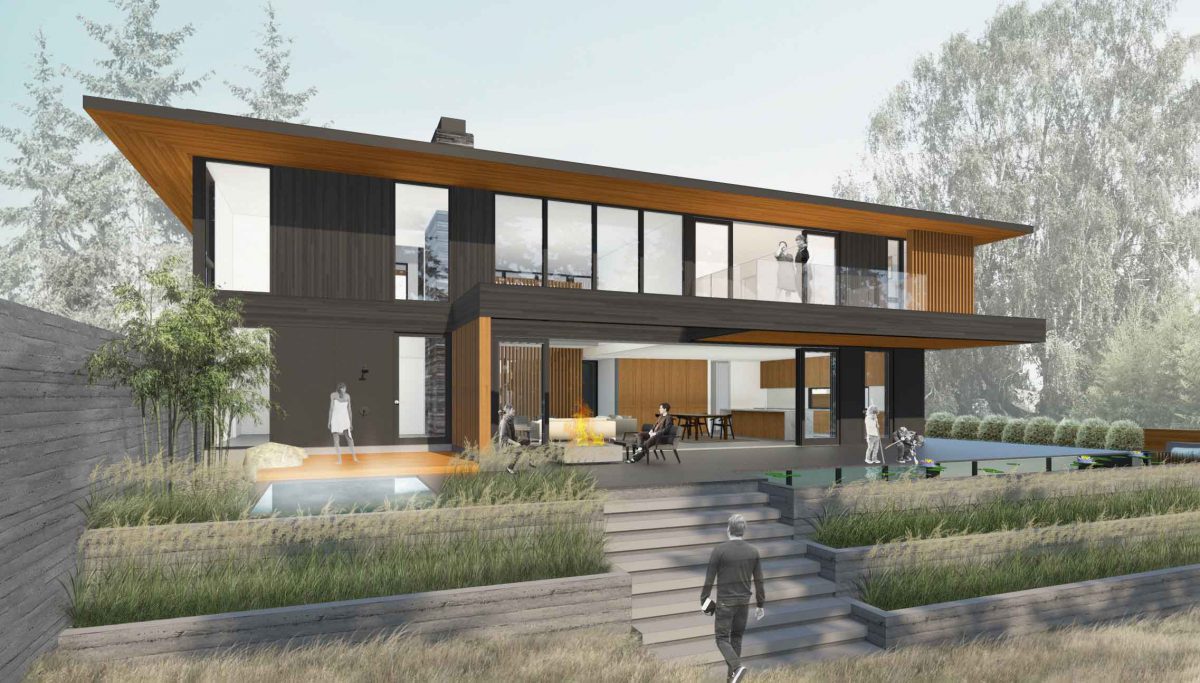In the words of a century-old real estate cliché, “location, location, location” is a huge consideration for any prospective homeowner. But when it comes to choosing a location for a custom home, additional complex factors come into play, and unfortunately, those factors are often overlooked.
If you’re in the process of choosing a lot for your home, a little research can save you a lot of trouble. Here’s how to find the best lot:
Explore the community

Just like with any home purchase, you want to make sure you’ll be happy in the neighborhood you choose. An in-person visit is well worth your time. Walk around different areas of the neighborhood. Maybe even drive around at night. Talk to people who live there if you get a chance.
Also look into any community resources and organizations you plan to use, which could include:
- Schools
- Libraries
- Supermarkets
- Local clubs, groups, churches, and charities
- Public parks and recreation areas
- Hospitals and medical facilities
If you’re working with a real estate agent, ask them what they think of the area, or do some research online. Is the neighborhood on its way up? Does it have good schools? These are important factors to consider if you want your home to increase in value over time.
Is the location convenient for you?
Whether you’re picking land for a home in the country, suburbs, or city, a great neighborhood isn’t a great location if it’s inconvenient for you. If anyone in your family drives to work on a regular basis, consider what the commute would be like. You might even do a test drive during your usual commute time.

Think about other location-specific activities too. Do you love going to musicals in downtown Portland? Are you planning to start a family soon and want to be near parents or relatives?
Think about what long-term inconveniences you could run into. That winding, scenic road from the freeway to your new lot might be breathtaking the first time you drive it, but will it become a hassle after a few years of daily driving have worn away its novelty?
Choosing the right lot type, size, and shape for you
The size and shape of your lot matters. Not only does it affect your building options, but also safety, nose levels, and opportunities for outdoor activities.

If your home will be in a neighborhood near other houses, the type of lot you choose has major implications:
- Cul-de-sacs offer diminished noise levels and a safer place for kids to play (no through-traffic). Their wedge shape tends to result in narrower front yards and wider backyards, which may or may not be what you want.
- Corner lots typically require landscaping on more sides and might mean more traffic. On the other hand, you’ll probably get more options when it comes to your driveway and garage. You may also get more natural light.
- Lots at a T-intersections must contend with headlights from cars at night, but they’re sometimes more affordable as a result.
- Flag lots are set way back from the street at the end of a long, extended driveway. Homes on these lots tend to be quiet and private, but you’ll want to see if you’d own the driveway or share it with a neighbor.
- Secluded lots in the country (away from cities and suburbs) give you more quiet, privacy, and building flexibility. But utilities might be more difficult to install, and you’re most likely setting yourself up for longer car trips.
Take your personal preferences into account too. For example, if you’re a gardener, make sure your lot will provide enough yard space for you.
Topography
The physical characteristics of the land itself can make your property beautiful, charming, and unique. Unfortunately, they can also be limiting. Is it actually possible to build your dream home on the land? Will your builder be able to run plumbing and electricity? Are there natural obstacles that can or cannot be moved? Potential obstacles could include trees, rocks, slopes, ditches, water (including ponds and creeks), and more.

Some of these questions can be answered with an in-person visit, but you should also get a land survey to make sure you know the exact boundaries of the lot as well as its grade (slope) and elevation at different points.
It’s also important to know the soil type before you commit to building anywhere.
Check local rules
Laws, regulations, and homeowners association restrictions, can affect your ability to use your land the way you want. Check with the local government to find out what regulations you’ll need to comply with.
If there are other, undeveloped lots nearby, you may want to look into them as well, even if you have no intention of buying them. If someone else has plans to develop them, that could affect your home’s privacy, noise levels, and scenery.
Take your time
Don’t rush the process. Doing this extra research is an important step on the way to getting the custom home you’ve been dreaming of. It will all be worth it.

If you’re still in the process of choosing a custom home builder to bring your vision to life, consider working with Hamish Murray Construction. We’re experts at ground-up construction, and have built many beautiful homes (like this one) in and around the Portland area. Call us at (503) 460-7203 or send us a message online to find out more about how we work.




